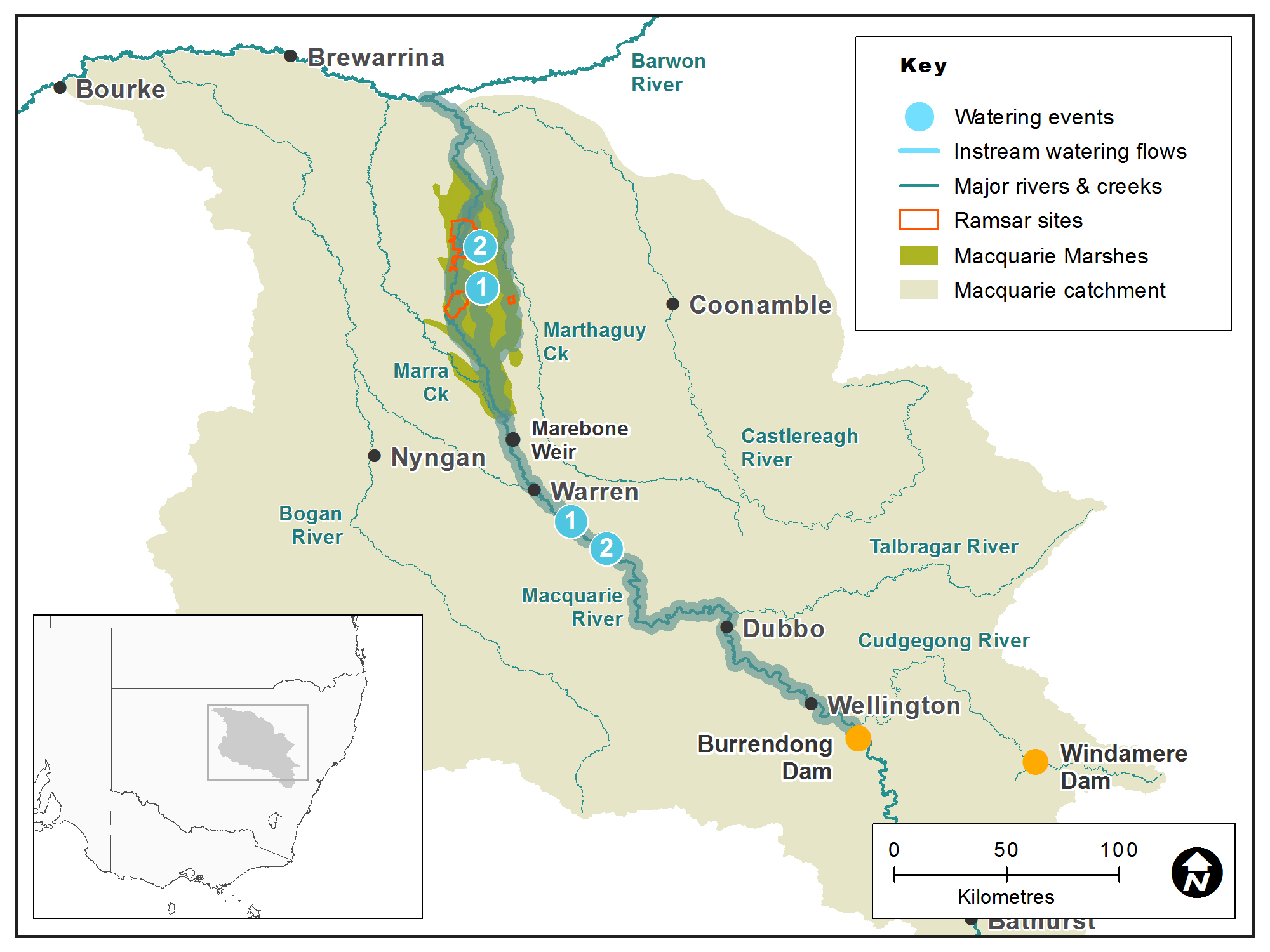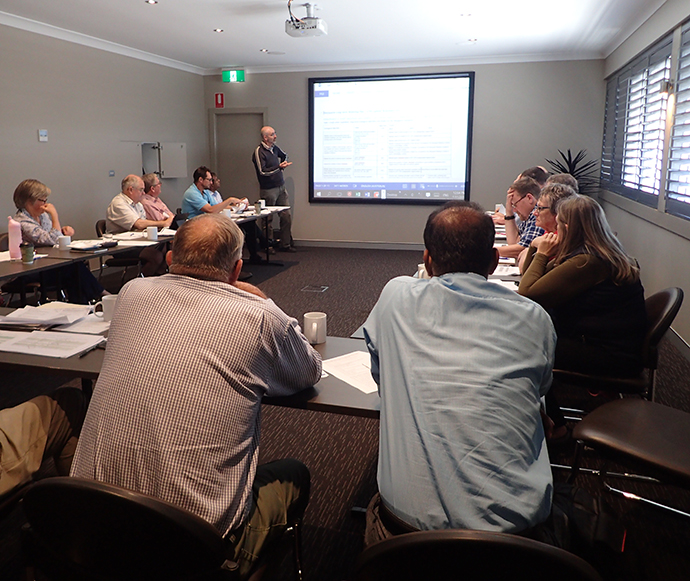The 2017–18 water year began with relatively full allocations and an optimistic outlook for the Macquarie–Castlereagh catchment.
Widespread inundation and system inflows during the previous 12 months meant demand for water in the Macquarie Marshes was relatively low. This provided an opportunity to develop a longer-term strategy for the use of available water reserves to support the iconic Macquarie Marshes and native fish populations.
The result was a 3-year release strategy that aims to:
- build resilience into the semi-permanent, mixed marsh and river red gum woodlands of the Macquarie Marshes
- have these wetlands and native fish populations ready to respond when the drought breaks
- facilitate connectivity between the Macquarie and Barwon Rivers.

Map of the Macquarie-Castlereagh catchment showing waterways, wetlands and locations of water for the environment deliveries made in 2017–18.
Watering aims
Within the context of the 3-year watering strategy, the community-based Macquarie-Castlereagh Environmental Water Advisory Group recommended two key watering components and contingencies for 2017–18:
- A 6 gigalitre pre-wetting flow to the southern and northern Marshes in July/August 2017 to:
- prime the system
- improve watering efficiency
- boost standing water in channels and shallow groundwater levels.
- A 128 gigalitre August–November spring delivery to the northern, southern and eastern Macquarie Marshes to provide a minimum of 90 days inundation of key wetlands areas in the Marshes.
To mitigate the impacts of potential future dry conditions, at least 160 gigalitres would be carried over. If suitable triggers (catchment inflows) were met, water would then be made available for a fish connection flow to the Barwon River via the Macquarie Marshes and Lower Macquarie River.
Water delivery
This table provides a summary of water for the environment use in the Macquarie-Castlereagh catchment during the 2017–18 watering year. Volumes are indicative only.
Notes: Location numbers in the table relate to watering events marked on the map.
NSW = NSW licensed environmental water (general security and supplementary licences); CEW = Commonwealth licensed environmental water; EWA = Environmental water allowance accrued under the Water Sharing Plan for the Macquarie and Cudgegong Regulated Rivers Water Source 2016.
| Watering event number | Location | Start date | Finish date | NSW | CEW | EWA | Total |
|---|---|---|---|---|---|---|---|
| 1 | Macquarie Marshes and mid-Macquarie River | 19 Jul 2017 | 14 Aug 2017 | 861 | 2239 | 2839 | 5939 |
| 2 | Macquarie Marshes spring flow and mid-Macquarie River | 15 Aug 2017 | 12 Nov 2017 | 18,624 | 48,421 | 61,393 | 128,438 |
| Region | Total |
|---|---|
| NSW | 19,485 |
| CEW | 50,660 |
| EWA | 64,232 |
| Total | 134,377 |
Outcomes
The delivery of water for the environment in 2017–18 achieved all planned outcomes.
An initial ‘pre-wet’ flow successfully primed the system and improved water efficiency by boosting standing water in the channels and shallow groundwater systems. The area inundated included Sinclair’s and Louden’s lagoons, which were fully replenished.
The main spring flow to the Macquarie Marshes:
- inundated the targeted 19,000 hectares of semi-permanent wetland vegetation communities, including reedbeds, water couch and mixed marsh and river red gum forest
- supported conditioning, breeding and dispersal of native fish flow generalist (Murray cod) in the mid-Macquarie River
- achieved a low flow connection to the Barwon River.
Less than 70 pairs of white Ibis, were observed breeding in one colony. Waterfowl, including swans, darters, pied and little black cormorants also bred as expected in low numbers.
Case study
The planning that underpins the use and success of environmental water over multiple years is a highlight of the 2017–18 water year.
It is difficult to beat a natural large-scale flood event when it comes to re-energising the river, floodplain and wetland system. The challenge is maintaining those gains until the next flood arrives.
The Macquarie–Castlereagh’s 3-year release strategy is a road-map for the use of water for the environment to support the Macquarie Marshes and native fish over the coming 3 years or until the next big wet – which-ever comes first.
Although this is not the first multi-year plan to be developed, its evolution to include connection flows with the Barwon River highlights the growing maturity and sophistication of planning undertaken by the Macquarie–Castlereagh Environmental Water Advisory Group.
The 3-year plan:
- is conservative, as it assumes that no further water will be allocated during the period
- provides certainty for future years, with water held in reserve and if conditions remain dry this water will be used to maintain about 19,000 hectares of semi-permanent, mixed marshes and red gum woodlands
- caters for optimism, by prioritising and distributing new allocations to build water security and service additional ecological requirements if identified during a water year.
OEH, in consultation with the Macquarie–Castlereagh Environmental Water Advisory Group, looked beyond the Macquarie catchment to provide a connection flow, if suitable triggers occur, with the Barwon River. This will support the movement of golden perch (and other native fish species) into the Macquarie River.

A meeting of the Macquarie–Cudgegong Environmental Water Advisory Group